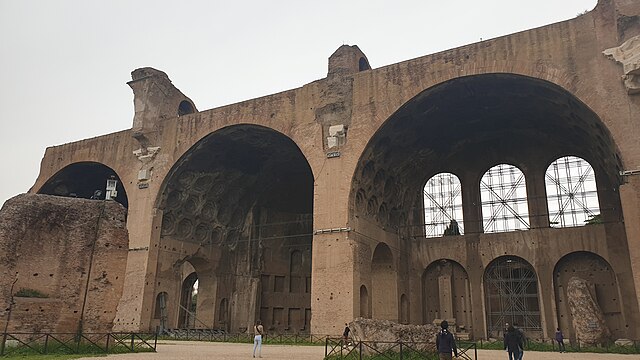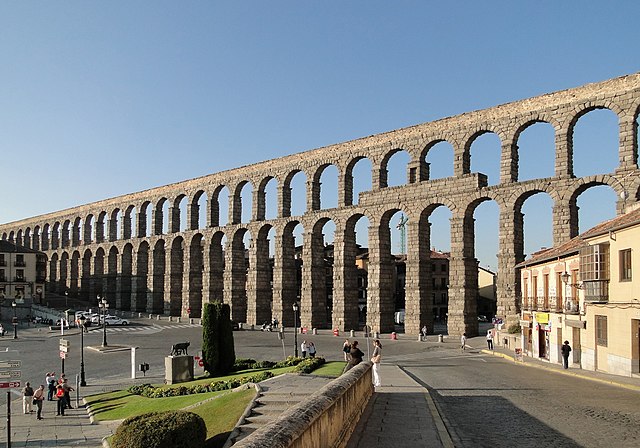Byzantine architecture is the architecture of the Byzantine Empire, or Eastern Roman Empire, usually dated from 330 AD, when Constantine the Great established a new Roman capital in Byzantium, which became Constantinople, until the fall of the Byzantine Empire in 1453. There was initially no hard line between the Byzantine and Roman Empires, and early Byzantine architecture is stylistically and structurally indistinguishable from late Roman architecture. The style continued to be based on arches, vaults and domes, often on a large scale. Wall mosaics with gold backgrounds became standard for the grandest buildings, with frescos a cheaper alternative.
Image: Hagia Sophia Mars 2013
Image: Ravenna San Vitale 201
Image: Kerch Church Of St John
Image: Basilica of San Vitale Lamb of God mosaic
Ancient Roman architecture
Ancient Roman architecture adopted the external language of classical ancient Greek architecture for the purposes of the ancient Romans, but was different from Greek buildings, becoming a new architectural style. The two styles are often considered one body of classical architecture. Roman architecture flourished in the Roman Republic and to an even greater extent under the Empire, when the great majority of surviving buildings were constructed. It used new materials, particularly Roman concrete, and newer technologies such as the arch and the dome to make buildings that were typically strong and well engineered. Large numbers remain in some form across the former empire, sometimes complete and still in use today.
Remains of the Basilica of Maxentius and Constantine. The building's northern aisle is all that remains.
The Colosseum, Rome, c. 70–80 AD
The Maison carrée in Nîmes (France), one of the best-preserved Roman temples, c. 2 AD
Aqueduct of Segovia (1st century AD), Segovia, Spain








